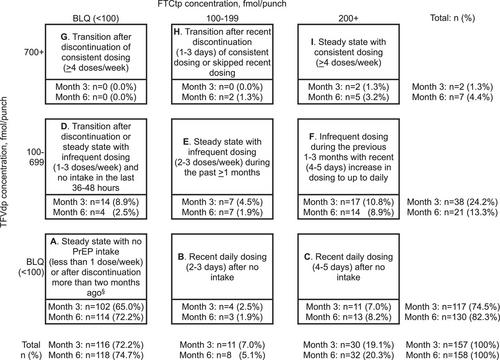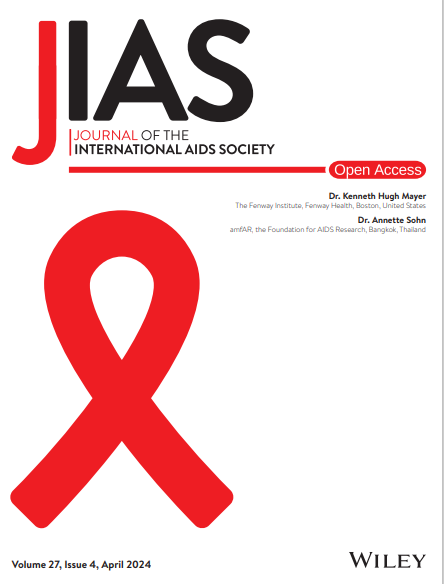Patterns of daily oral HIV PrEP adherence among people who inject drugs in Ukraine: an analysis of biomarkers
Abstract
Introduction
Daily oral HIV pre-exposure prophylaxis (PrEP) with tenofovir/emtricitabine (TDF/FTC) is recommended for people who inject drugs (PWID) but coverage is low. The real-life effectiveness of PrEP among PWID is unknown as previous studies were conducted in controlled settings and mainly relied on self-report. Analysis of PrEP metabolites—tenofovir diphosphate (TFVdp) and emtricitabine triphosphate (FTCtp)—offers an objective measure of adherence.
Methods
To analyse longitudinal patterns of PrEP adherence among PWID in Ukraine, we used data from a community-based implementation trial conducted in Kyiv between July 2020 and March 2021 to test the efficacy of SMS reminders to improve adherence. Among 199 enrolled participants, 156 (78.4%) were retained through 6 months. Based on TFVdp/FTCtp levels assessed at 3 and 6 months, we identified groups with various adherence patterns (adherent at ≥2 doses/week, improved, worsened, non-adherent). Correlates of adherence were analysed using multinomial logistic regression.
Results
Most participants (53.8%, n = 84/156) had no detectable metabolites at both assessments; 7.1% (n = 11/156) were consistently taking ≥2 doses/week; 1.3% (n = 2/156) were consistently taking ≥4 doses/week; 13.5% (n = 21/156) exhibited improved and 21.8% (n = 34/156) had worsened adherence at 6 compared to 3 months. “White coat compliance” (increased dosing prior to assessment) was common. Consistent adherence was associated with SMS reminders, younger age, employment, lower income, longer injection drug use duration, recent high-risk injecting (receptive syringe sharing, using pre-filled syringe, back- or front-loading, container sharing), absence of overdose in the past 6 months, perceived HIV risk through sexual intercourse and higher PrEP self-efficacy. Alcohol consumption was associated with inconsistent PrEP use. Groups with improved and worsened adherence did not differ.
Conclusions
Daily oral PrEP may not achieve the desired effectiveness among PWID as a standalone intervention, calling for testing of alternative PrEP formulations and innovative integrated risk reduction strategies, especially in the context of HIV epidemics associated with injection drug use in eastern Europe and central Asia and the public health crisis in Ukraine caused by the war with Russia. SMS reminders may be effective among PWID who prioritize PrEP. Our findings offer practical guidance in identifying PWID who are likely to benefit from PrEP and those who need additional support.


 求助内容:
求助内容: 应助结果提醒方式:
应助结果提醒方式:


